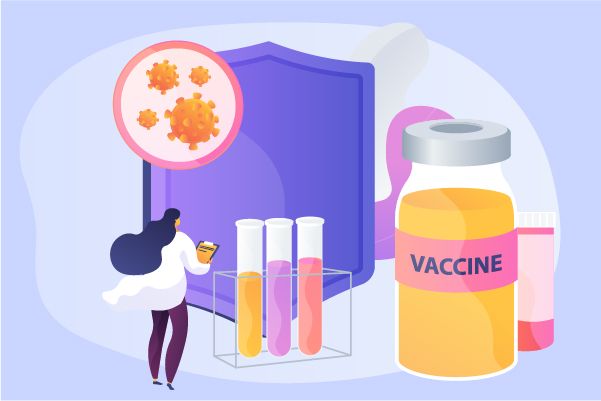What are the adjuvants in vaccines?
Adjuvants are substances used in vaccines to enhance the body's immune response to an antigen. They are important for increasing the effectiveness of vaccines, particularly when the antigen is weakly immunogenic or when a reduced dose of the antigen is used. Here are some common types of adjuvants used in vaccines:
·Alum: Aluminum salts, such as aluminum phosphate or aluminum hydroxide, are the most widely used adjuvants. They create a localized inflammatory response that stimulates the immune system.
·Oil-Water Emulsions: Adjuvants like Freund's adjuvant (which contains mineral oil) and MF59 (an squalene-based oil-in-water emulsion) can enhance the duration and strength of the immune response.
·Liposomes: These are tiny vesicles that have a lipid bilayer and can encapsulate antigens, protecting them from degradation and facilitating their uptake by immune cells.
·ISCOMs (Immature Secretory Antigen-Targeting Carriers): These are spherical structures that mimic some aspects of viruses and can enhance the immune response to the antigens they carry.
·Cytokines: Proteins like granulocyte-macrophage colony-stimulating factor (GM-CSF) can be used as adjuvants to recruit and activate immune cells at the site of vaccination.
·CpG Oligonucleotides: Synthetic DNA sequences that mimic bacterial DNA and can stimulate the immune system through Toll-like receptor 9 (TLR9).
·AS04: An adjuvant system containing aluminum salts and monophosphoryl lipid A (MPL), which is a component of the hepatitis B vaccine Fendrix and the human papillomavirus (HPV) vaccine Cervarix.
·AS01: A glucopyranosyl lipid A (GLA)-based adjuvant system combined with QS-21, used in the Shingrix vaccine for shingles.
·Virosome Adjuvants: Virosomes are small vesicles that mimic the structure of a virus and can enhance the immune response.
·Squalene: A naturally occurring oil that is used in some adjuvants, such as AS03, which is used in the H1N1 influenza vaccine.
·Hydrogels: These are networks of cross-linked polymers that can act as a slow-release system for antigens.
·Microparticles and Nanoparticles: These can be used to deliver antigens directly to immune cells, often providing a more potent and targeted immune response.
·ISCOM Matrix: A proprietary adjuvant based on ISCOMs, which is used in some veterinary vaccines.
·Heat Shock Proteins (HSPs): Some vaccines use HSPs as adjuvants to enhance the immune response.
·Flagellin: A protein found in the flagella of bacteria that can act as a potent adjuvant.
Adjuvants are carefully selected and used based on the specific requirements of the vaccine, such as the type of immune response needed (cell-mediated or humoral), the stability of the vaccine, and the safety profile of the adjuvant. The use of adjuvants in vaccines is subject to rigorous safety testing and regulatory approval to ensure their safety and efficacy.




